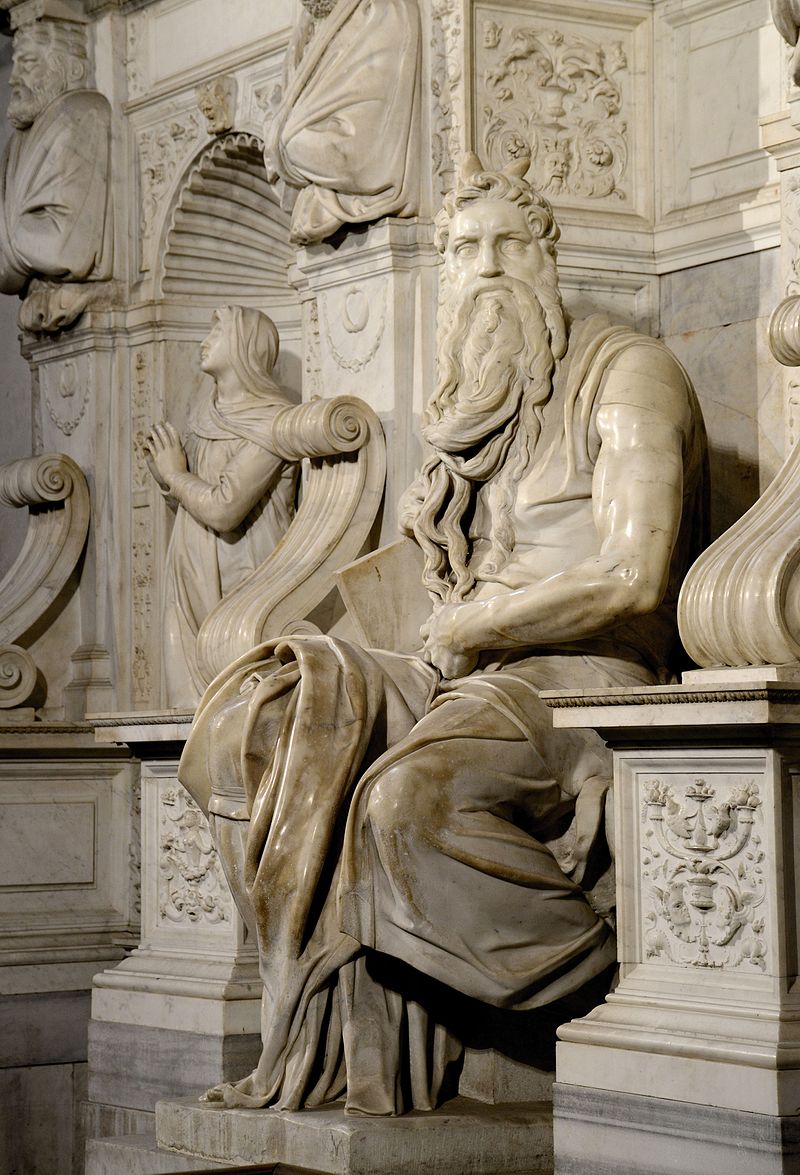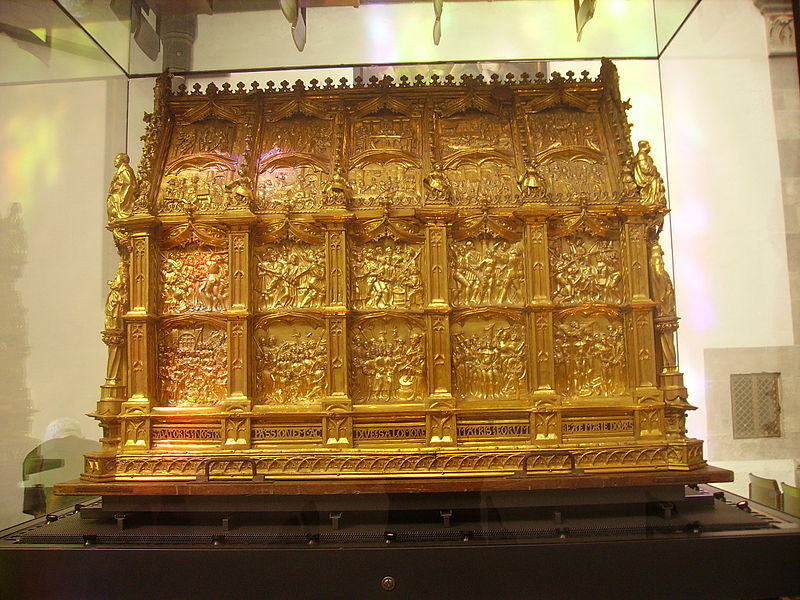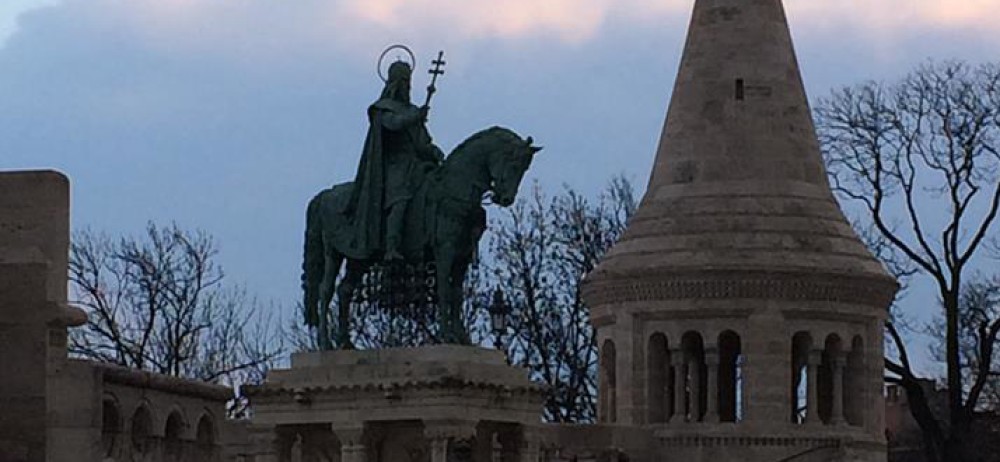
Statue of Moses by Michelangelo, in the church of San Pietro in Vincoli, Rome. The relics of the Maccabees were kept in this same church.
The veneration of the Maccabean martyrs is unique in the Judeo-Christian tradition: they are the only martyrs commemorated by Jews and Christians alike. The seventh chapter of the Second Book of Maccabees (in the Old Testament) tells the story of seven faithful Jewish brothers who maintained their fidelity to the Law of God in the face of persecution during the tyranny of Antiochus IV in the second century B.C. The New Testament book of Hebrews commends these martyrs of Maccabees as exemplars of living faith (Heb 11:35).
These seven Jewish brothers and their mother were arrested and ordered to eat the un-kosher flesh of a pig. The horrific murder of these Maccabean martyrs was so terrible and gruesome that we derived an English word from it—-macabre.
The festival of Hanukkah in December celebrates the revolt led by the Maccabees against the Syrian emperor Antiochus IV. Christians have long commemorated the Maccabees on August 1 and the relics of the 7 Maccabee brothers, with their mother and teacher were long kept in the Church of St. Peter’s Chains (Rome). The relics were sent to Germany to be housed in a church in Cologne (the same city where the relics of the Magi are kept); evidently the Maccabean relics had been kept in Cologne before they had been sent to Rome.
By keeping the Maccabean relics and the statue of Moses in the Church of St. Peter’s Chains, we can see the connection between the Law of Moses and those Maccabean martyrs who died for refusing to abandon that Law. Even more, their memory is joined with the imprisonment and eventual martyrdom of the Apostle Peter. (We know that the festival of Hanukkah was still fairly new in the first century AD but that Jesus celebrated it with the apostles in John 10:22-23.)
You can find a very interesting article (in German!) here about the relics of the Maccabees that includes close-up photos of the golden reliquary which contains their bones. (If you open the page using Chrome, it will offer to translate the page for you–I want to thank my daughter Rebekah for teaching me that trick!)
The reliquary itself is fascinating. It was apparently made in 1500; it is a wooden box in the form of a church, covered with gilded copper plates. The walls of the shrine and top portions are composed of 40 scenes in which the story of the Maccabee brothers and their mother is placed in parallel with the suffering of Christ and His mother Mary. One of the most obvious examples is the contrast of the flagellation of the Maccabee brothers and the flagellation of Jesus. On the front of the shrine is the Coronation of Mary and the Coronation of the Maccabees, while on the back the Ascension of Christ is depicted with the heavenly glorification of the Maccabees.

The shrine for the Maccabees’ relics in St. Andrew’s Church (Cologne, Germany).

It looks like the reliquary of the Magi
I thought so as well… it does look a great deal like the Magi reliquary. But the reliquary of St. Wenceslaus in Prague is very similar as well so I think that must have been a common or standard style of reliquary for more-or-less whole bodies rather than individual limbs or fragments.
You probably recall that the Maccabees and the Procession of the Cross are on the same day and their feast is more solemnly observed in the East but it has always been on the calendar in the West just further down in the Martyrology I saw the feast in Lives of the Saints when I was a child I was always the idiot savant about liturgy and music
Dear Joseph: Yes, there are a variety of saints and events commemorated on August 1. The procession of the Cross is related to the frequent summer outbursts of illness in the ancient world; you can read an informative essay about this here. Maybe I will write about the procession of the Cross and the Lesser Blessing of Water next summer. 😉
Fascinating article Stephen! I knew about the Maccabees from my time singing at a Temple here in Sarasota, however, didn’t know about the Christian connection. Also didn’t know about the relics being housed at the church in Rome. My sister and I got to visit that church this past October for the first time. It is lovely. You are a fount of information about many religious matters my friend! I so appreciate it! Hugs, John
John: I was also thrilled to visit this church a few autumns ago but was disappointed to discover that the Maccabee relics had been moved to Germany. But I was very glad to see the sculpture of Moses and to venerate the chains of St. Peter kept on display. Remember me in your prayers, my friend. 🙂